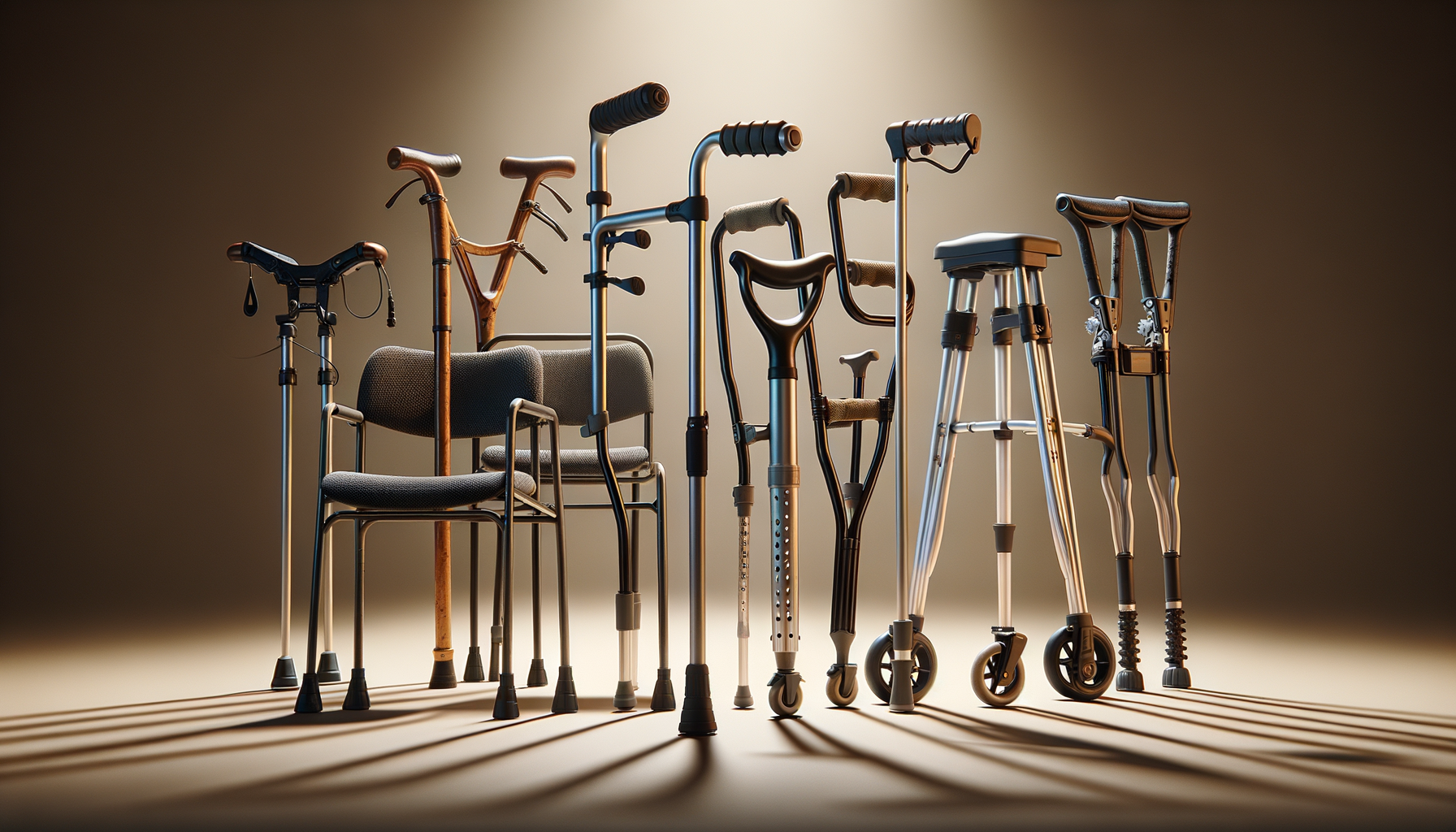Introduction to Walking Aids
Walking aids are essential tools for individuals needing support with mobility and balance. These aids are not only vital for those recovering from injuries but also offer long-term assistance to those with chronic conditions affecting their ability to walk. The variety of walking aids available today ensures that there is an option suitable for every individual’s unique needs, lifestyle, and physical condition. From the simplicity of a cane to the advanced features of rollators, these aids enhance independence and improve the quality of life for many.
Types of Walking Aids
Walking aids come in several forms, each designed to cater to different levels of mobility and support. The most common types include:
- Canes: Ideal for individuals who need minimal support, canes help in maintaining balance and reducing the weight borne by the legs.
- Walkers: These provide more support than canes and are particularly useful for those with significant balance or stability issues. Walkers are often used by elderly individuals or those recovering from surgery.
- Rollators: Equipped with wheels, rollators offer convenience and ease of movement. They are perfect for individuals who can walk but require additional support to prevent falls.
Each type of walking aid is designed with specific features to address different mobility challenges, ensuring that users can find the right aid for their specific condition.
Benefits of Using Walking Aids
The use of walking aids offers numerous benefits, making them an indispensable part of many people’s lives. Key advantages include:
- Increased Independence: Walking aids allow individuals to move around more freely, reducing reliance on others for mobility.
- Improved Safety: By providing stability, walking aids significantly reduce the risk of falls, which are a major concern, especially for the elderly.
- Pain Reduction: For individuals with joint pain or arthritis, walking aids help distribute weight more evenly, alleviating discomfort.
- Enhanced Confidence: Knowing they have the support they need, users of walking aids often feel more confident in their ability to navigate different environments.
These benefits highlight the importance of walking aids in promoting a more active and independent lifestyle.
Choosing the Right Walking Aid
Selecting the appropriate walking aid involves considering several factors, including the user’s physical condition, the level of support needed, and personal preferences. Here are some tips to guide the selection process:
- Consult a Healthcare Professional: A doctor or physical therapist can provide valuable insights into which type of walking aid would be most beneficial based on the individual’s medical history and current condition.
- Consider the Environment: The type of surfaces the user will navigate most frequently should influence the choice of aid. For instance, rollators are better suited for smooth, indoor surfaces.
- Assess Physical Capabilities: It’s important to choose a walking aid that the user can manage comfortably and safely. This includes considering the user’s strength, balance, and coordination.
- Try Before You Buy: Whenever possible, testing different walking aids can help determine which feels most comfortable and secure.
By carefully evaluating these factors, individuals can select a walking aid that enhances their mobility and fits seamlessly into their daily routine.
Innovations in Walking Aids
The field of walking aids has seen significant innovations in recent years, driven by advancements in technology and a better understanding of user needs. Some notable developments include:
- Ergonomic Designs: Modern walking aids are designed with user comfort in mind, featuring ergonomic handles and adjustable heights to reduce strain.
- Smart Technology: Some walking aids now incorporate smart technology, such as sensors that alert users to potential obstacles or provide feedback on their walking patterns.
- Lightweight Materials: Advances in materials have led to the creation of lighter, more durable walking aids that are easier to maneuver.
- Customizable Features: Many walking aids offer customizable options, allowing users to tailor them to their specific needs and preferences.
These innovations are transforming walking aids from simple tools into sophisticated devices that offer enhanced functionality and user experience.
Conclusion: Embracing Mobility with Walking Aids
Walking aids play a crucial role in enhancing mobility and independence for individuals facing challenges in walking. By understanding the different types of aids available, their benefits, and how to choose the right one, users can significantly improve their quality of life. As innovations continue to emerge, walking aids will only become more effective and user-friendly, offering even greater support and confidence to those who rely on them. Whether for short-term recovery or long-term assistance, walking aids remain a valuable resource in promoting active and independent living.








